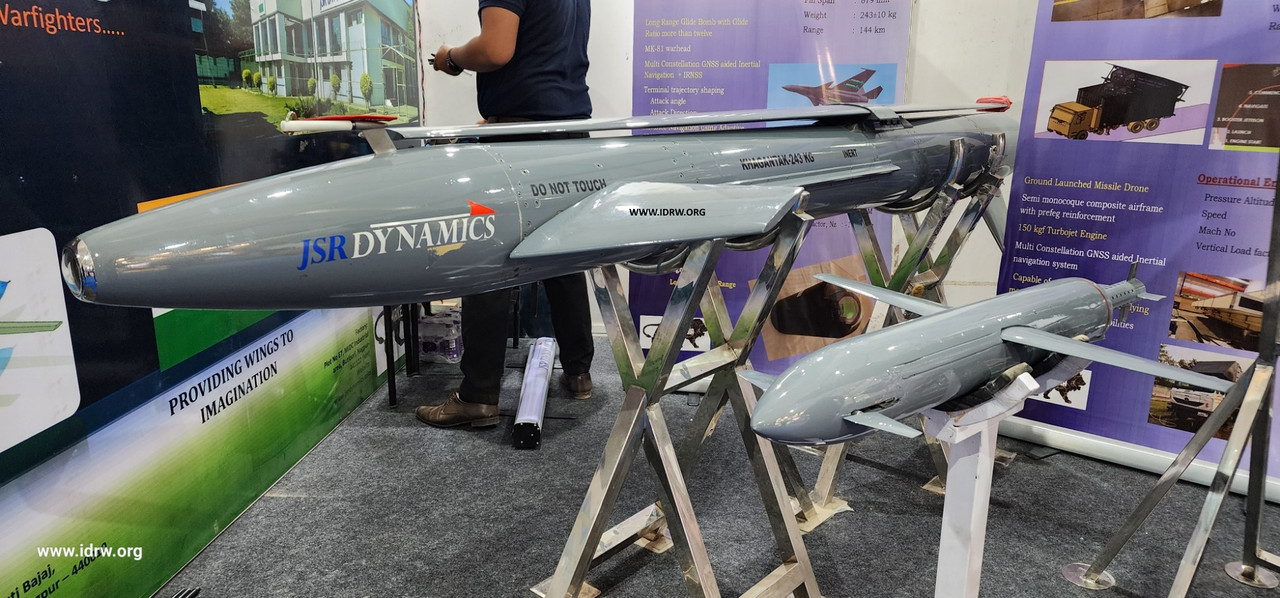SOURCE: IDRW.ORG


A significant revelation emerged from India’s defense circles: the Indian Armed Forces deployed the JSR Dynamics Khagantak missile—a 180 km strike range air-to-ground weapon—during the recent Indo-Pakistan clashes as part of Operation Sindoor (May 7–10, 2025). This marked the first combat deployment of the Khagantak, alongside other indigenous systems, which have now earned the coveted “battle-proven” distinction after their performance in live combat. The successful use of these homegrown technologies underscores India’s growing self-reliance in defense manufacturing and its ability to deliver decisive blows in modern warfare.
Developed by Nagpur-based JSR Dynamics, the Khagantak missile was first unveiled at Defexpo-2020 in Lucknow, where it was hailed as a major milestone for the Make in India initiative. The missile, designed for air-to-ground strikes, boasts a range of 180 km when launched from an altitude of 12 km. It features advanced aerodynamic performance and a seeker with artificial intelligence for target recognition, making it a highly precise guided weapon.
JSR Dynamics’ Managing Director, Air Marshal SB Deo (Retd.), had emphasized its capabilities, noting its potential to compete globally with European-quality equipment at Asian market prices. The missile also has variants with an extended range of up to 297 km, carrying warheads of 72 kg or 146 kg, showcasing its versatility for various combat scenarios.
During Operation Sindoor, launched in response to a terror attack in Indian-administered Kashmir that killed 15 soldiers, the Indian Air Force (IAF) deployed the Khagantak missile to strike Pakistani military targets. While specific details of its targets remain classified, defense sources indicate that the missile was used to hit high-value assets, potentially including command centers or radar sites, complementing the BrahMos supersonic cruise missile strikes on 11 PAF airbases. The Khagantak’s ability to strike at 180 km allowed IAF jets—likely Su-30MKIs or Rafales—to engage from a safe distance, minimizing exposure to Pakistan’s air defenses, such as the Chinese-supplied HQ-9 system, which struggled to counter India’s offensive.
For JSR Dynamics, the Khagantak’s battlefield success is a vindication of its efforts to innovate in the niche area of airborne guided weapons. Air Marshal SB Deo, who has championed indigenous defense production, likely sees this as a proud moment, as his vision of competing globally with cost-effective, high-quality systems comes to fruition. The Khagantak’s performance also builds on JSR Dynamics’ recent innovations, such as the Miniature Ground Launched Drone-Weaponized (MGLD-W), a 297 km range missile drone capable of Mach 0.85, unveiled in April 2025.
NOTE : Article cannot be reproduced without written permission of idrw.org in any form even for YouTube Videos to avoid Copy right strikes. Websites doing illegal reproductions will get DMCA and Legal Notices.